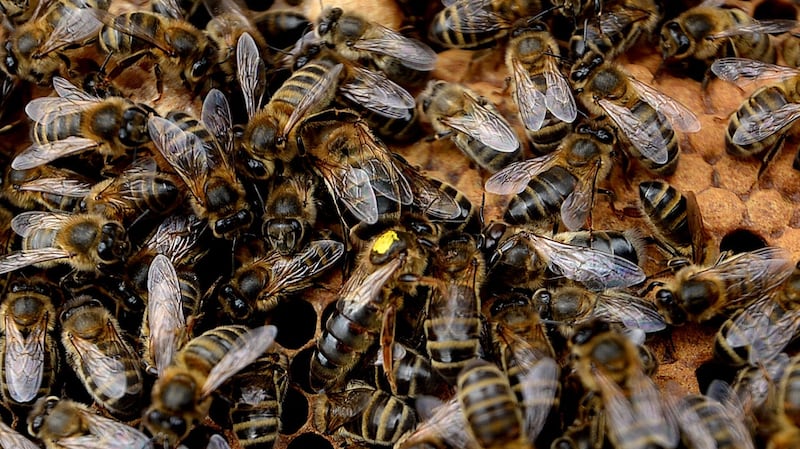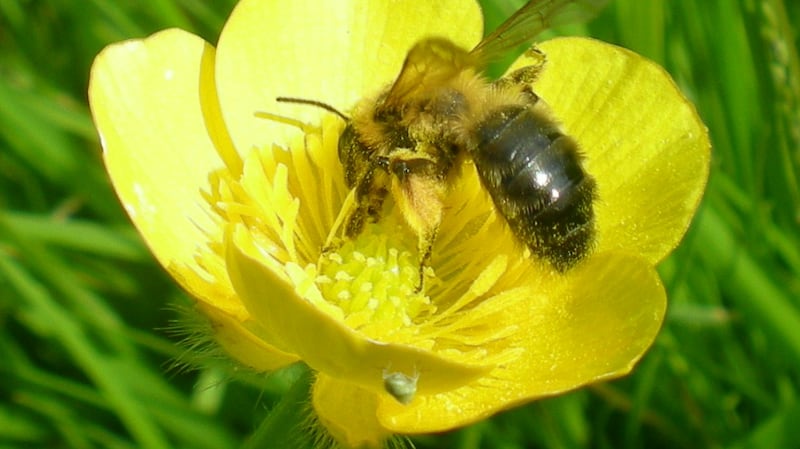It may seem blindingly obvious, but unlike birds, mammals and insects, plants can’t move around to find a mate. So when it comes to ensuring their genetic inheritance is passed on to future generations, they’ve had to develop alternative matchmaking strategies.
Some have evolved special techniques that use the wind to spread their male bits (pollen) far and wide. Others make use of the hungry bees, flies, butterflies, birds and bats who unknowingly brush up against the pollen as they drink nectar from flowers, and carry it with them when they move to the next plant to feed – a sort of unconscious ecological “thank you” to the plant for having provided lunch.
The plants that rely on the handiwork of these aforementioned pollinating creatures include some of humanity’s favourites: strawberries, coffee, cocoa, tomatoes, apples, etc.
A whopping 75 per cent of food crop species need pollination to maximise the amount of seed or fruit produced, or to improve its nutritional quality, appearance and shelf life. So it follows that pollinators are incredibly important for agriculture, food production, food security, world trade and human health.
But we shouldn’t only consider the plants that we find delicious: almost 90 per cent of the plant species worldwide benefit from pollination – including the vast majority of the flowers, shrubs and trees we see in the landscape. These plants provide food, homes and mating opportunities for other wildlife, and they also play critical roles in managing the flows of nutrients, sequestering carbon, purifying the air and water, and maintaining the physical structure of soils.

So if we need plants, and plants need pollinators, it makes sense that we need pollinators too. But there's a problem: the way we grow the plants we eat is killing pollinators on a massive scale. In Ireland, a third of bee species are threatened with extinction.
Why? Because there are fewer flowers in the landscape, Irish bees are hungry; because there are fewer places to nest and hibernate, they are homeless; because we use pesticides on our crops that contain neurotoxins, they are poisoned; and because we import foreign hives to pollinate specific crops – some members of which escape into the wild – they are catching diseases that their immune systems aren’t equipped to deal with. Then there’s climate change, which multiplies all of these threats.

We know what we have to do to fix this. Scientists, NGOs, businesses and government have collaborated on a plan to conserve our pollinators – the All-Ireland Pollinator Plan – and putting it into action requires everyone, especially the public, to get involved. Most of the actions are voluntary, the kind of simple things we can do in our gardens, in our communities, on our farms and in our businesses.
But we also need large-scale change to make a real difference, and this costs money. This is why last month we posed some questions here in The Irish Times to find out whether or not readers knew about pollinator decline and whether you felt it was important to reverse it, and to see what you thought about the various ways in which it could be paid for (ie tariffs and fines, taxes, voluntary donations or higher food prices).
We also asked whether you’d been involved in any kind of wildlife conservation yourself. The results of this survey will be used to help us build the case for pollinator conservation, to inform future studies on the best ways to tackle the problem and to support the development of policies that make a real impact. Thank you for getting involved, and if you have not already done so, please fill out the questionnaire on this page.
Citizen Science initiative: This article is part of a citizen science initiative led by Trinity College Dublin and The Irish Times and is supported by the Environmental Protection Agency and Science Foundation Ireland through its Discover Programme. Feedback, suggestions and questions are welcome at info@citizenscience.ie












